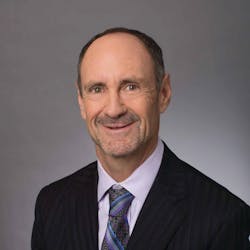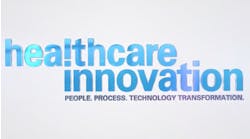One could grow old waiting for predictions about the U.S. healthcare delivery and payment system to come true; and indeed, many have. But one of the most important sets of predictions is now at long last coming to fruition: as has been predicted for several decades now, the leaders of health plans, physician groups, and hospitals are fully collaborating together to leverage data and analytics to fuel robust population health management and care management efforts—and are achieving results.
Just consider a few examples from around the country:
• At the Indianapolis-based Anthem, Antonio Linares, M.D., regional vice president and medical director for Anthem National Accounts, notes that he and his colleagues have been focusing on the highest-utilizing plan members across the health plan’s western region, and sharing that data with their affiliated physicians. “Our analytics process can identify the 3 percent of their panel membership that are responsible for 29 percent of the panel’s healthcare costs. We’re able to give them that report, with actionable insights. The report can provide actionable insight around membership with poor diabetes compliance, asthma, or heart disease,” he says. “This lets the care provider focus additional efforts on these individuals you need to address.” Using that data in one of the health plan’s western accountable care organizations (ACOs), he says, “We’ve been able to target members who have complex conditions and other situations, who need help and who would benefit from care coordination and disease management programs at two times the level of accuracy,” and are now able to “create a future risk model that predicts 163 days in advance an individual who’s more likely to fall into one of those high-risk categories.”
• Meanwhile, at L.A. Care, the contracted health plan for MediCal (the California term for Medicaid) enrollees in Los Angeles County, Matthew Pirritano, Ph.D., director of population health analytics and quality improvement, reports that a program that he and his colleagues have created, called the “VIP Program,” has involved the development of “a regression model that helps us to set targets for the number of encounters that our IPAs [independent practice associations—the normal form of physician organization in California] should be submitting to us.” Now in its fourth year, that program, which was in turn the more sophisticated version of an earlier pay-for-performance program, is helping Pirritano and his colleagues to gauge “provider performance in a number of domains, like HEDIS and member satisfaction, and also is attached to some other elements. There are action plans required from the IPAs based on the data we give them in their report cards,” he notes. “They see the data and if they’re low-performing on a measure, we require them to send us an action plan in at least one area. It’s been a very positive program. We’ve seen improvements across the board in the performance of our network. The inspiration for it was looking at the variation in our network, and finding that there was considerable variation among high-performing and low-performing groups.”
• An example of a partnership that is going even further is the joint venture announced on June 24 between Blue Cross and Blue Shield of Minnesota and the 900-physician North Memorial Health physician organization, both based in Minneapolis-St. Paul, which has made the organizations shared owners of the North Memorial Health clinics. Under that agreement, North Memorial Health’s 20 primary and specialty care clinics will operate as a joint venture overseen by the CEOs of the two organizations, Craig Samitt, M.D. of BCBSMN and J. Kevin Croston, CEO of North Memorial Health. “Healthcare costs too much, and it is too often difficult for people to understand and navigate. With this joint venture, we’re removing confusion from the equation,” said Samitt, upon the announcement of the joint venture. “Blue Cross and North Memorial Health have come together to transform healthcare in Minnesota in a way that no others have, and the winner will be the consumer.” The two organizations are hoping to reduce overall cost of care by up to 20 percent over the next five years, with a focus on wellness, prevention and health outcomes, rather than consumption of services.
• And at the San Diego-based Sharp Rees-Stealy Medical Group, which encompasses about 500 physicians, Trung “Andy” Dang, M.D., the group’s medical director of quality and population health, has been leading a broad initiative around the development of patient registries, in order to support care management around both preventive screenings (breast, colorectal, and cervical cancer among them), as well as the management of congestive heart failure, cirrhosis, hypertension, and diabetes, as well as for patients who have had more than three ED visits in the past 12 months. As a result, Dang says, ED utilization has been reduced, and patients have been more carefully monitored and care-managed. Key to all of this, he says, is “making sure the data is accurate, the attribution is to the correct PCP [primary care physician], and making sure it’s understandable and actionable for the clinicians. The clinicians get overloaded with data and overwhelmed; display is important.” And, he says, “We’re using the logic in the Allscripts solution” for population health, “enabling the clinicians to look and see where there are gaps in care, and how those can be addressed.”
The secret sauce: ingredients
What’s the secret sauce in the success of all of these organizations, and others? Healthcare leaders in the trenches see several key elements:
• Whatever type of organization is involved—whether medical group, hospital-based integrated health system, or health plan—those leading change are focusing on mission, on core business/organizational strategy, and putting mission and strategy ahead of everything else.
• All the organizations at the forefront of change are also fortunate to have senior executives who are taking personal-professional risks and showing leadership in the face of the immense challenges facing all U.S. healthcare organizations.
• The pioneers are committing to broad, long-term transformation—across years and even decades.
• All are focusing on key stakeholder constituencies among their patient and plan member populations—primarily individuals who are high utilizers (the so-called “frequent flyers”), who are at higher risk for ED visits and hospitalizations/readmissions.
• All are making strategic, incisive, thoughtful use of data analytics tools, and incorporating those tools into core care management, population health management, and clinical transformation initiatives.
Strategy, at a high level, that drives tactics
That focus on strategy is affirmed by all those interviewed for this story. Anthem’s Linares puts it this way: “Let’s define population health: our definition is a model that we call Total Health, Total You (THTY). And by total health, we mean that all the data and information available in the healthcare ecosystem should be put into a personalized profile. We’re focused on a digital and analytics-first approach. Within THTY, there are several high-level goals: first, to increase member and patient engagement through smarter tools that empower people to engage with their health. They are powered by activation tools that use the knowledge we have about the member including in-depth risk scores, and that’s where the analytics comes into play. The second high-level goal is to provide a better consumer experience of healthcare. And to achieve that, we have more clinically focused advocacy and care navigation models, that boils down to better care coordination. The third area is really the physician and clinical partnerships and collaborations. And that’s where our advanced analytics help to improve care delivery, and what we call care optimization.”
From the health plan leadership perspective, says Shahid Alam, chief analytics and information officer at Blue Cross and Blue Shield of Minnesota, “The goal is to combine not just our administrative and claims data, but combine that with providers’ clinical data and social determinants of health data, and genomic data, and get to where the retail industry has already gotten” in terms of its sophisticated ability to identify consumers and develop profiles of them. “Order tennis shoes on Amazon, and then you open Facebook, and it suggests tennis shoe retailers. We have to get to that level in healthcare,” he says. “I want to take us to where we can leverage artificial intelligence and machine learning. Machines can help us think outside the box. I want my team to be able to leverage machine learning to think outside the box, and put the data at the fingertips of clinician partners,” says Alam.
Leveraging analytics to get real results
Every one of the organizations whose leaders were interviewed for this story have strong results to show for their investment of time, energy, and funding into this work. Speaking of L.A. Care’s VIP Program, Pirritano says, “The inspiration for it was looking at the variation in our network, and finding that there was considerable variation among high-performing and low-performing groups,” at the time the program was initiated in 2019. What’s of particular importance, Pirritano notes, is that the health plans’ continual sharing of data with the physician groups does not take place in a vacuum; instead, he notes, the program was launched with a series of meetings involving the organization’s chief medical officer, chief operating officer (COO), and chief medical information officer (CMIO), and the leaders of all 60-plus IPAs, representing several thousand practicing physicians in L.A. County. “Those were very positive meetings. We laid out for the groups the evolution and thinking behind the VIP. There were some additional measures initially that we decided to move, and we got their feedback on the measures we did include. Did they agree that these were valuable metrics? Remember, they had already been in a very similar program for the prior five years. So for most of them, this was not new; it was raising the visibility of the program.” The program has continued to evolve forward very successfully, with increasing robustness of data, including, now, data being collected at all the school wellness centers in L.A. County, and Department of Mental Health data as well.
Importantly, Drozda emphasizes, the connections among data collection, data analysis, and continuous clinical performance improvement, are vital to pursue. “So there’s a lot of work involved in coming up with conclusions in our analyses. A lot of people in the past have tried to just gather up raw data from EHRs, and it’s not really usable for meaningful analyses. That’s been a major learning for us.” And, he adds, what has become evident is that “We need to be getting patients in to see cardiologists sooner rather than later. It’s been a very worthwhile exercise; we still haven’t answered all the questions yet, but we’re raising them.”
The unique landscape of pediatric healthcare
At Nemours Children’s Health, a multidisciplinary team has been sifting through immense amounts of digital data, and turning it into actionable alerts and prompts for clinicians. As Alex Koster, director of analytics and technology at the VBSO (Value-Based Services Organization) at Nemours explains it, “from an architecture perspective, Nemours has started to build out HealthyPlanet platform from Epic; we’re on a single instance of Epic. We have the ability to look at data across all our markets for our primary care population: 112,000 patients across Delaware Valley, and 170,000 altogether, including Florida. We’re able to look at different data sources—payer files, rosters, gap in care reports, not yet adjudicated claims, but we have the capacity to do that. And we have the capacity to do more advanced analytics, like composite clinical risk scores, to stratify our populations, and for that, we use 3M’s CRG—Clinical Risk Groups.”
And what are the team members learning? “As you look through different lenses—for example, when you look at who your high utilizers are for ED services, or readmissions, and then add another filter, such as their clinical risk score, you can see opportunity with regard to historical utilization and clinical complexity,” Koster says. “You also find contradictions, where a patient isn’t clinically complex, but presents with high utilization.”
“We have limited resources, and we [can’t] do everything, so we’re leveraging our data to identify resources” that can really change patient outcomes, says Jamie Clarke, executive director of the VBSO. And what that translates to, says Lisa Adkins, R.N., senior director of the VBSO’s medical management team, is that “We have care coordinators embedded in all the primary care practices: so how can we impact both the high-acuity high utilizers and the low-acuity high utilizers? We’re rolling out a medical management care management program where we’re building disease management models. So with the data analytics crew under Alex, we’re able to focus on either the highest-utilizing, sickest kids, who need help with their care as well as social determinants of health (SDOH) issues like housing, language, food insecurity; or middle-level patients where the care coordinators can help pull the patients into the patient-centered medical home; to our lowest-risk kids, who mostly need reminders and health education.”
Leveraging the insights from that data, Adkins adds, “The embedded care coordinators really work with the families to help them coordinate their care, to follow up on specialty care appointments, to deal with SDOH issues, to follow up around emergency care and inpatient use, and to share opportunities for telehealth appointments, utilizing our Kids Health on Call—a nursing phone service—to let kids and their families know that we have their backs and they can contact a nurse 24/7. They work very hard with families who have a lot of needs and don’t have a lot of resources, so they connect them with resources around food insecurity, transportation, even housing and clothing needs. But they’ve focused so much on building registries, with Alex’s group, to help them develop registries. We’ve developed an asthma registry, so we’re able to help families understand their asthma action plan, and that they need to see their PCP at least twice a year, and they may need to see a pulmonologist or someone else,” says Adkins.
Addressing avoidable readmissions
Meanwhile, at Advocate Aurora in Illinois and Wisconsin, Tina Esposito, system vice president and chief health information officer, reports that she has been helping to lead a multidisciplinary team that’s been addressing avoidable readmissions, creating a readmissions probability model. “What’s been different about it,” Esposito notes, “is that we’ve embedded it into the workflow and into the EHR. And it recalculates a patient’s risk of future readmission throughout the inpatient stay. It’s fed by a number of variables, including lab results, medications, and length of stay.” And, extremely importantly, “The total use of the model has reduced readmissions by 30 percent. And a model is only as good as the consumption of it. You need to make sure that it’s relevant to care.”
Of course, ultimately, policy and payment concerns are driving all of this work. With overall annual U.S. healthcare system expenditures expected to explode from $3.3 trillion a year now to around $6 trillion by 2027, clinical transformation will become a necessity. Moving forward, Blair Childs, senior vice president for public policy at the Charlotte-based Premier Inc., urges provider and health plan leaders to be willing to rethink care delivery. “How do you engage and keep patients? How do you manage your population more proactively and effectively? There are facility strategies, there are clinician strategies, and there are population health strategies.” Data analytics, he agrees, will be an absolutely critical element in moving forward to transform the healthcare system overall.
Fortunately, the leaders at all of these healthcare organizations—both providers and health plans—are cracking the code, and providing case studies in success in leveraging data and analytics to fuel the transformation of care delivery and care management that needs to happen in the next decade of U.S. healthcare.






